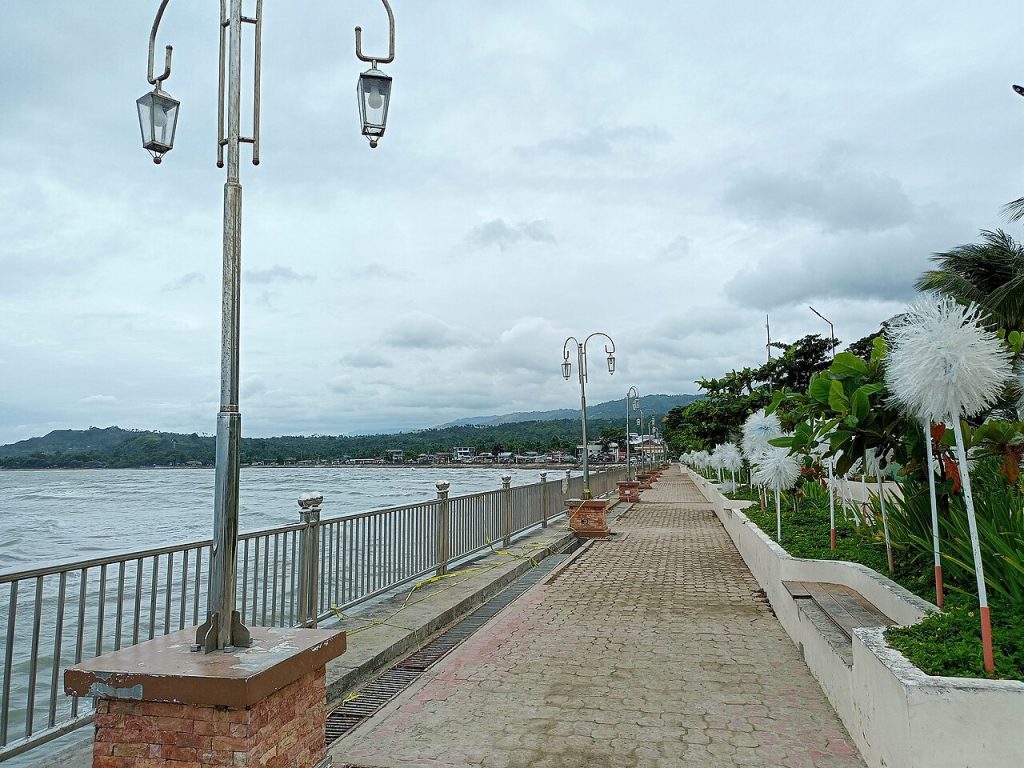
Esplanade at the Guihulngan Rizal Freedom Park Boulevard by NUwordlifeOrder
Guihulngan City: Rising Star of Northern Negros Oriental
Nestled on the northern coast of Negros Island, Guihulngan is a thriving component city in the province of Negros Oriental. First founded in 1800, it achieved cityhood in 2007, briefly lost it, and finally secured its status in 2011—earning recognition as the “rising city of the north” with 33 barangays, a 2020 population of 102,656 residents, the city spans about 388.sq. kilometers (150.02 sq. miles) of varied terrain, including coastal plains, hills, and mountains.
History & Etymology
Guihulngan’s name has dual legends:
- One source claim it derives from Guipadulngan, meaning “where the river flows to its end.”
- Other traces it to Guihulugan, “place where a thing was dropped,” inspired by the grim act of dropping a bell or worse into the sea by Moro raiders. Over time, Spanish transcription turned the name into Guihulngan.
Dumaguete.com
What to See & Do
1. Hinakpan Mystical Hills
Often dubbed the “Chocolate Hills of Negros”, this landscape includes around 237 conical limestone hills in Barangay Hinakpan, with Monte Calvario offering panoramic views and pilgrimage steps.
2. Kansalakan Enchanted River
A mystical deep-green river between Banwague and Balogo, complete with natural plunge pools and cliff-jumping spots. Locals whisper of mysterious disappearances and guardian spirits watching over the waters.
3. Arvor Caves
Hidden within the Hinakpan Hills, these small caves are named after their discoverers (Arnald, Roldan, Victor, Oligario, Ranny). Visitors can spot stalactites and local bats deep inside.
4. Freedom Park & Carabao‑Bell Monument
A central space on the main highway, it features a bell hung on a carabao statue near Justice Hall. The bell ties back to the city’s founding lore and is a community hub for events.
5. St. Francis of Assisi Church & Rizal Monument
The historic church dates back to the 19th century, while the Rizal Monument originally erected in 1919 was relocated to Freedom Park in 2012 during city upgrades.
by Winlove Feroline
Festivals & Culture
- Cara‑Bell (Hinugyaw) Festival – Held May 24, celebrating the legendary bell story with street dancing, parades, and cultural showcases.
- Santacruzan – A vibrant procession in May, honoring Queen Elena’s discovery of the True Cross.
- Charter Day – In July, marking cityhood with fairs, sports, pageants, and fireworks.
- Kawayan Festival – October’s tribute to bamboo culture and crafts.
- Pasko sa Guihulngan – December festivities, highlighted by lantern displays and Christmas markets.
Economy & Local Life
Guihulngan thrives on agriculture—rice, corn, coconut, sugar—and coastal fishing. It has also become a retail and industrial hub hosting Puregold, Prince Hypermart, and MR.DIY, and has banking services from PNB, BDO, and others. Altogether, it’s transitioning toward becoming an agro-industrial center.
Food, Stays & Souvenirs
- Local treats: Budbud, Puto Maya, and ginamos—sweet sticky rice cakes and salted fish paste.
- Accommodation: Options range from budget guesthouses to charming heritage stays—e.g., Bethel Guesthouse, Casa Amparo.
- Shopping: Don’t miss bamboo crafts, preserved produce, woven textiles, and homemade rice wine (laksoy).
by Guihulngan City Post – Media and Trends
How to Get There
- From Dumaguete: 3–3.5 h via air-conditioned bus (₱130).
- From Cebu: Ferries from Toledo to San Carlos, then bus to Guihulngan, followed by habal-habal (~₱300) to hill and river sites.
Final Thoughts
Guihulngan is a hidden gem combining rich heritage, vibrant festivals, and remarkable natural wonders—from mystical limestone hills and enchanted rivers to cool caves and meaningful cultural landmarks. It’s an ideal destination for travelers seeking off-the-beaten-path adventures and deeply rooted traditions. Whether you’re an explorer, a food lover, or a culture enthusiast, Guihulngan promises unforgettable stories and experiences.
Plan your visit: Aim for late January for Hinugyaw or May’s Santacruzan, explore scenic hills and rivers in off-peak season, and don’t miss local delicacies and craftsmanship that speak of Guihulngan’s vibrant spirit.
by Choy Lando Photography